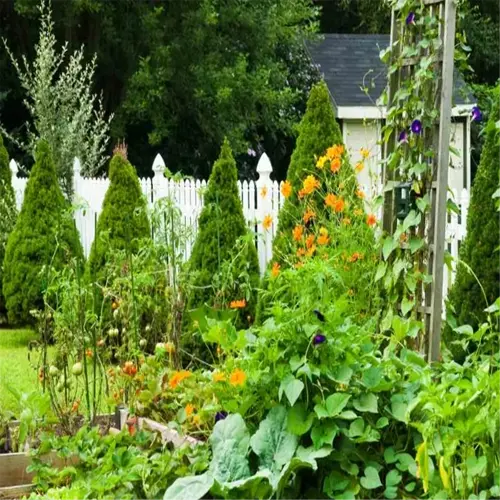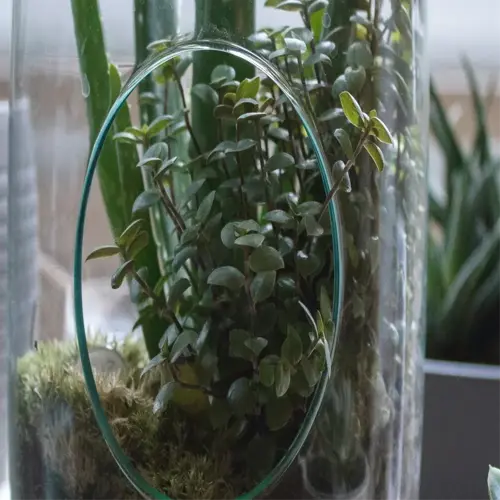7 Key Signs of Overwatering Plants to Spot Early

Written by
Paul Reynolds
Reviewed by
Prof. Charles Hartman, Ph.D.Signs of overwatering include yellow leaves with soft, limp textures
Edema blisters indicate cellular damage from excessive water absorption
Root rot manifests as black, mushy roots with foul odors
Persistent soil dampness beyond five days signals overwatering issues
Sudden leaf drop without color change reflects root stress
White mold growth on soil surfaces requires immediate intervention
Article Navigation
Detecting the symptoms of overwatering can often be more difficult than recognizing symptoms of underwatering. A thirsty plant will not hesitate to show you when it needs water due to shriveling and crispy leaves. An overwatered plant will suffer in silence until the roots begin to rot. This ongoing damage makes early symptoms of overwatering important for the health of the plant.
Picture your plant's roots struggling to get air underneath the water. Just as our lungs require oxygen for gas exchange, your plant's roots need air pockets within the soil to do their job. Those saturated conditions will submerge those crucial roots when you ultimately have a disaster going on underneath the surface that you cannot see.
Many plant owners have the mistaken belief that watering plants all the time is a nurtured care of the plant. Roots that sit in saturated soil are unable to absorb nutrients effectively, which contributes to poor growth and leaves the plants susceptible to attack by fungal organisms and pests.
Pet owners should recognize that overwatered plants in puddles of standing water commonly grow dangerous molds for animals. It is especially important to use well-draining pots and non-toxic potting soil, as you try to protect the health of the plant while also fending off curious pets.
Visible Leaf Changes
A uniform yellowing throughout whole leaves is typically a sign of [[potential]] overwatering. Long-standing experience with excess water defines these symptoms as different from nutrient deficiencies that generally affect the veins first. Leaves that are yellowing are often limp and feel soft, not crisp as in drought-stressing plants. You may also notice soil that stays wet for days after watering, which is silent but deadly to roots.
When roots push excess water into leaf cells, edema blisters develop as raised, translucent bumps on the leaf surface. Edema occurs while causing damage to the leaf, with water-intrusive pockets clustered along the undersides of the leaves. Edema blisters rupture turning into corky scars when not treated, which will permanently mar the foliage.
Plants afflicted by excessive watering will shed leaves indiscriminately; a green leaf may fall beside its yellowed counterpart. The dried-out leaves typically follow a pattern, beginning with the oldest leaves first since the plant needs to keep new growth alive. Just check the area on the plant tree where the leaves grew to find the source of stress.
When you zoom in, you'll spot the telltale signs of overwatering: the cell walls are nearly bulging from the water pressure created inside them to produce that wilted lettuce appearance. For comparison, look for the precise bite marks of pests and/or botrytis or powdery mildew which identifies diseases. The obvious signs against misdiagnosis are a very important and needed visual cues.
There was a time when I confused edema blisters with spider mite damage and just about treated the plants with some horrible pesticide. Upon further inspection, there was no webbing and no movement, so I quickly dismissed the idea that it was a spider mite. I take leaves to inspect the blisters now and if they fill with water, it feels cool and taut compared to the rough texture of the damage caused by pests.
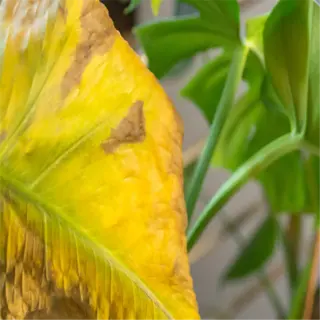
Yellowing Leaves
- Yellowing begins at leaf tips and edges before spreading inward uniformly without veinal prominence
- Affected leaves develop a soft, limp texture rather than maintaining structural integrity
- New growth shows discoloration faster than mature leaves in early stages
- Absence of green veins distinguishes from iron deficiency patterns in plants
- Accompanied by stem softening near soil line in advanced overwatering cases
- Reversible through immediate soil drying if addressed within 48-72 hours
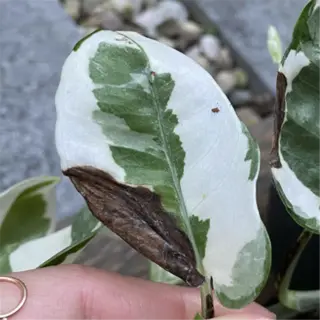
Brown Spots
- Circular brown lesions appear with yellow halos indicating cellular breakdown
- Spots expand radially from central necrosis points under persistent moisture
- No visible pests or webbing distinguishes from insect-related leaf damage
- Lower leaves show symptoms first due to proximity to wet soil
- Tissue becomes papery thin in affected areas unlike fungal spots
- Prevent spread by removing affected leaves with sterilized pruning tools
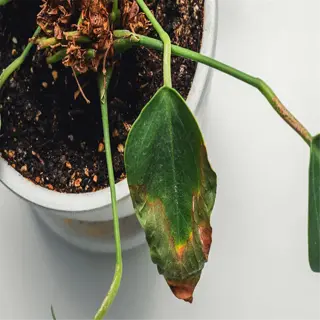
Leaf Drop
- Simultaneous loss of both old and new foliage indicates systemic stress
- Fallen leaves show no signs of natural aging like crisp edges
- Petioles detach easily from stems due to weakened cell walls
- Leaf drop occurs suddenly rather than gradual seasonal shedding patterns
- Morning leaf drop indicates overnight root suffocation from excess water
- Recovery possible if watering ceases before complete root system failure
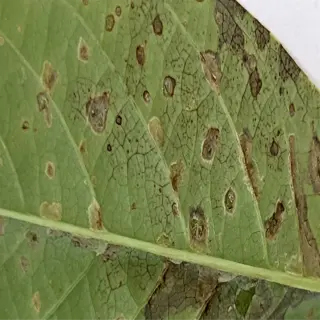
Edema
- Raised blister-like bumps form on undersides of leaves first
- Corky texture develops as plant attempts to seal damaged cells
- Occurs most frequently in succulents and thick-leaved plant varieties
- Blisters may rupture leaving permanent scar tissue on leaf surfaces
- Often precedes fungal infections due to compromised cellular structure
- Manage through improved air circulation and reduced watering frequency
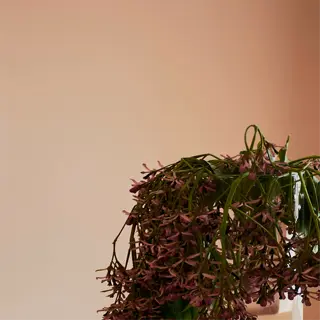
Wilting Paradox
- Leaves droop despite wet soil due to root oxygen deprivation
- Stems remain firm unlike underwatering-induced limpness
- Worsens after watering rather than showing improvement
- Affects entire plant uniformly rather than section-based wilting
- Soil probe reveals saturated conditions below surface level
- Requires immediate drainage improvement and root inspection
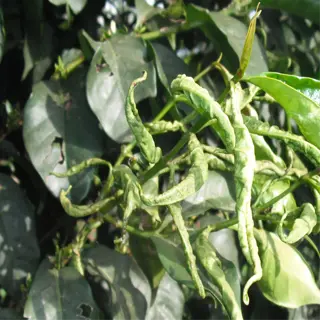
Leaf Curling
- Downward curling along leaf margins indicates cellular overhydration
- Persists even after soil dries due to permanent cell damage
- Accompanied by translucent leaf appearance in severe cases
- Differentiate from heat stress curling by checking soil moisture
- More common in tropical plants with thin leaf structures
- Prune irreversibly curled leaves to redirect plant energy
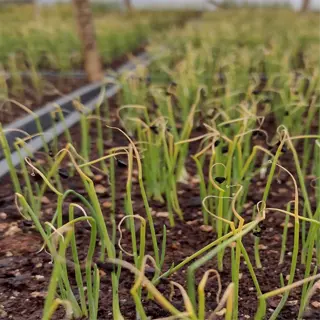
Stunted Growth
- New leaves remain small and fail to unfurl properly
- Internodal spacing decreases significantly compared to healthy plants
- Flowering plants abort buds before full development
- Root constriction visible when repotting waterlogged specimens
- Combine with yellowing for definitive overwatering diagnosis
- Requires complete soil replacement in advanced cases
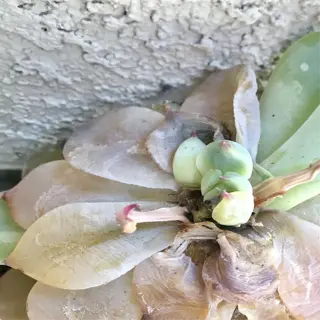
Translucent Leaves
- Cell walls rupture creating water-soaked transparent patches
- Begins as glossy patches before turning brown and necrotic
- Most evident when backlit by strong light sources
- Irreversible damage requiring leaf removal
- Common in jade plants and other succulents
- Indicates chronic overwatering over weeks/months

Fungal Growth
- White powdery mildew develops on upper leaf surfaces
- Sooty mold appears as black film on honeydew deposits
- Fungal gnats visible around soil surface and lower leaves
- Remove affected leaves and treat with cinnamon solution
- Improve air circulation around plant foliage
- Avoid overhead watering to prevent spore spread
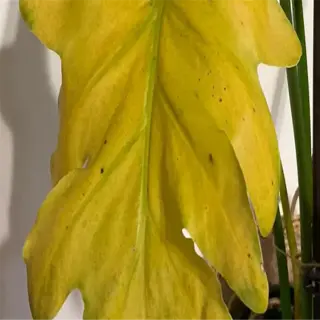
Leaf Splitting
- Random fissures develop along leaf midribs and veins
- Caused by rapid cell expansion from excess water uptake
- More prevalent in plants with waxy leaf coatings
- Distinct from mechanical damage by clean split edges
- Prevent by allowing proper dry periods between watering
- Use support stakes to protect split leaves during recovery
Soil Texture Clues
Determining soil texture discloses vital indications of excessive watering that would go undetected by many. When probing clay soil, for any moisture to remain encased with your finger after five days, you have overwatered! A sandy mix should feel almost dry at that same depth, and a loamy texture would have a crumbly like a birthday cake.
The presence of a white, fuzzy mold on the soil surface acts as a warning signal from nature. This growth is an indication of trapped moisture and passive air movement, creating perfect conditions for root suffocation. I have observed clients mistaking this growth for healthy fungi until they pulled the plant from its container only to realize the roots were black.
The unmistakable stench of rotten egg odors indicates that soil bacteria predominating under anaerobic (oxygen-depleted) conditions are overwhelming your soil. These anaerobic bacteria thrive in waterlogged soil where they produce toxic hydrogen sulfide. Healthy soil has an earthy aroma, but a rotten egg odor is a sign of intense anaerobic microbial activity - the equivalent of a plant screaming for air.
Drainage holes frequently mislead us about their efficiency. Insert a pencil into each of the holes at least once a month to uncover concealed clogs. Last summer I discovered a client's 'draining' pot hiding seven blocked holes beneath decorative gravel, a death trap masquerading as a beautiful design.
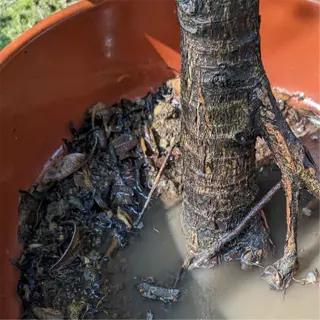
Persistent Dampness
- Surface remains moist 5+ days after watering indicates poor drainage
- Clay soils show prolonged wetness compared to fast-draining mixes
- Test by inserting wooden skewer 6 inches deep overnight
- Healthy soil should dry slightly between waterings
- Root suffocation occurs at 72+ hours of saturation
- Improve with perlite or pumice amendments

Mold Growth
- Fuzzy white mycelium indicates excessive organic matter breakdown
- Green algae develops under constant moisture and low light
- Remove top 2 inches of contaminated soil immediately
- Apply cinnamon powder as natural antifungal treatment
- Increase air circulation around soil surface
- Prevent recurrence with bottom-watering techniques
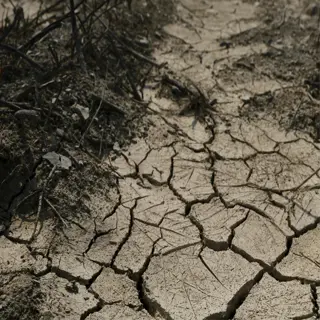
Soil Shrinkage
- Contraction gaps between soil and pot walls signal compaction
- Occurs when organic matter decomposes from excess water
- Leads to uneven water distribution during irrigation
- Rehydrate gradually over 48 hours to prevent root shock
- Repot with fresh soil containing coconut coir
- Avoid pressing soil tightly during repotting
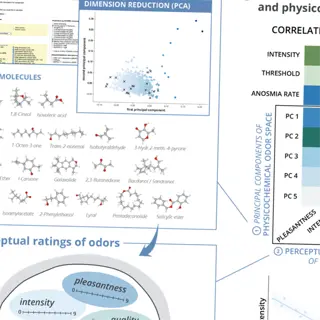
Odor Development
- Rotten egg smell indicates anaerobic bacterial activity
- Musty odor suggests fungal colonization
- Sour milk scent appears in dairy-based compost teas
- Flush soil with 3% hydrogen peroxide solution
- Sun-dry soil for 4-6 hours if possible
- Replace soil completely if odors persist
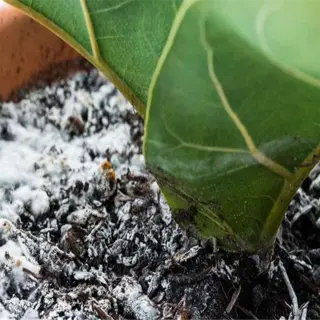
Salt Buildup
- Crystalline deposits form from fertilizer accumulation
- More prevalent in clay and peaty soils
- Leach minerals with distilled water flush monthly
- Scrape visible crust without disturbing roots
- Use rainwater for irrigation in hard water areas
- Switch to liquid fertilizers for better control
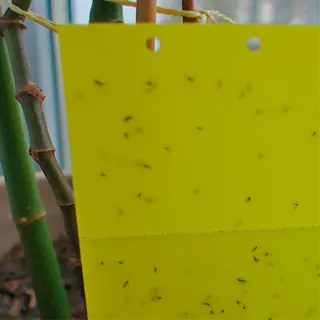
Insect Activity
- Fungus gnats swarm when soil remains constantly damp
- Springtails indicate advanced decomposition of organic matter
- Apply mosquito dunk tea to target larvae
- Use yellow sticky traps for adult insects
- Let soil dry completely between waterings
- Add sand layer to deter egg-laying
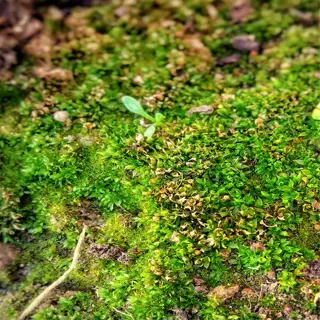
Moss Development
- Bryophyte growth signals constant moisture and low light
- Indicates acidic soil conditions below pH 5.5
- Scrape off moss and adjust watering frequency
- Test pH levels with litmus paper strips
- Add dolomite lime to neutralize acidity
- Improve light exposure gradually
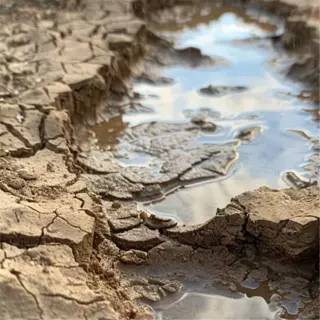
Water Pooling
- Standing water on surface 10+ minutes post-watering
- Indicates compacted soil structure and poor absorption
- Aerate soil gently with chopstick or dowel
- Mix in coarse orchid bark for drainage
- Elevate pots using feet or risers
- Check for clogged drainage holes weekly

Earthworm Exodus
- Worms surface when soil oxygen levels drop critically
- Occurs 24-48 hours after severe waterlogging
- Collect and temporarily house in ventilated container
- Reintroduce after soil rehabilitation
- Create worm hotel with dry bedding material
- Monitor soil moisture with probe meter

Root Visibility
- Surface roots develop seeking oxygen in waterlogged soil
- Differentiate from natural mat-forming root systems
- Gently repot deeper with well-draining medium
- Prune circling roots with sterile shears
- Apply rooting hormone to stress-damaged roots
- Use transparent pot to monitor recovery
Root Rot Symptoms
Overwatering can have the earliest signs in roots before leaves show any signs of distress. Healthy roots are white or pale yellow and firm in texture, whereas rotting roots will be brown-black and mushy textures. The color change comes from suffocation from continued saturation in the soil. The roots are drowning since they do not have access to oxygen.
Looking closely at roots is a delicate process. Turn the pot to the side and hold the base of the plant while removing. Remove the loose soil to get a closer look at the color of the roots. Do not pull, if it feels stuck, get it wet first, and you can easily break the roots if pulled unnecessarily.
Rotting roots have a distinctive smell that resembles sulfur, which is different from the pleasant smell of healthy soil ... the earthy smell of healthy soil. It's similar to the difference between grabbing some swamp mud versus grabbing a fresh bag of potting mix! The smell comes from anaerobic bacteria living without oxygen in the degrading roots of your plant.
A solution of 3% hydrogen peroxide is useful for salvaging the health of suffering roots. Mix one part of hydrogen peroxide with four parts of water. Allow the roots to soak for ten minutes to aerate the root tissues and kill pathogens. Use this process weekly until root tips emerge white.
In a previous engagement, I was able to successfully revive a client's monstera by pruning off 80% of its rotted root system. We repotted in chunky orchid bark and top dressed with peroxide soaks. Within six weeks, the client had an abundance of beautiful healthy roots, demonstrating that even the most dire cases can recover if you take swift action.
Root Discoloration
- Healthy roots: Firm white or yellow appearance
- Early rot: Translucent brown roots with slimy coating
- Advanced rot: Blackened roots that crumble when touched
- Causes: Anaerobic soil conditions from waterlogging
- Solution: Trim above decay line with sterilized shears
Odor Identification
- Fresh earth smell indicates healthy roots
- Sulfuric odor resembles rotten eggs in early stages
- Methane-like smell signals advanced decay
- Compare to normal potting mix aromas
- Isolate plant immediately upon detection
Soil Adhesion
- Healthy roots easily shed loose soil
- Rotted roots cling to mud in dense clumps
- Muddy clusters indicate decomposed root hairs
- Reveals poor oxygenation in root zone
- Gently rinse roots for accurate inspection
Structural Integrity
- Firm resistance when lightly squeezed
- Mushy texture indicates cell wall breakdown
- Outer sheath slips off central stele
- Visible hollow tubes in severe cases
- Sterilize tools between plants to prevent spread
Secondary Symptoms
- Sudden leaf drop without color change
- Stunted growth despite ideal conditions
- White mold on soil surface
- Fungus gnat infestations
- Basal stem softening
Overwatering vs. Underwatering
Watering too much and too little generate different stress signals. Limp, flopping stems with yellowed leaves are usually signs of waterlogged roots that cannot breathe. On the other side, crispy brown edges on the leaves that curl inward mean dehydrated plants and they are in distress and are trying to conserve moisture by reducing the surface area.
Test soil moisture intervals using the two-knuckle rule. Overwatered soil feels mucky, even or still, after seven days. Underwatered dirt will dry out completely and become bone-dry within three days (with dirt or soil pulling away from the edges of the pots). The soil must feel like a wrung sponge, damp and moist but not dripping.
When you're uncertain, just give a sniff test to the roots. A rotten egg smell means anaerobic decomposition has happened because of overwatering. Dry roots produce a musty smell - almost like dry leaves on an autumn day. Once, I diagnosed a client's fern just by its smell; that sulfuric punch of a rotten egg smell was a clear indicator of root rot, even before we un-potted it.
To revive your plant from overwatering, prune the blackened roots away and replant them in a fresh gritty mix. To revive your plant from underwatering, you can soak the pot in water for 30 minutes at room temperature. Both plants should recover in bright indirect light. Direct sun at this stage only further stresses the roots.
Avoid misdiagnosis by continuing to monitor watering dates and plant performance. A moisture meter can help you avoid this guesswork; more than likely if you get a reading between 3-4 your plant's soil is not too dry and not too wet for most houseplants. Pay attention to the season, as heating and AC significantly increase the rate of indoor evaporation during the summer months and during winter months.
Leaf Symptoms
- Overwatering: Yellowing with soft, translucent patches
- Underwatering: Brown crispy edges curling inward
- Both conditions may cause leaf drop
- Overwatered plants show uniform yellowing
- Underwatered plants exhibit localized dryness
Soil Texture
- Overwatered: Clumpy, moldy surface with poor drainage
- Underwatered: Cracked, hydrophobic soil pulling from edges
- Poke test depth: 2" damp vs. bone-dry
- Compaction levels indicate water retention
- Odor test distinguishes root health
Root Health
- Overwatered roots: Black/brown and slimy
- Underwatered roots: Brittle and papery
- Healthy roots remain white/yellow
- Mushiness indicates advanced rot
- Dry hollow roots suggest chronic thirst
Plant Recovery
- Overwatered: Requires dry period and repotting
- Underwatered: Gradual rehydration over 48 hours
- Root pruning essential for rot
- Humidity dome aids dry plants
- Hydrogen peroxide treats root fungus
Watering Frequency
- Overwatered: Suspend watering 7-10 days
- Underwatered: Soak-dry cycle every 3 days
- Use moisture meter for objectivity
- Adjust for seasonal humidity changes
- Pot material affects drying speed
Watering Adjustments and Tools
Moisture meter accuracy can differ greatly from budget meters to premium devices. The $10 versions are 15-20% inaccurate because they rely on very simple sensors. $50+ moisture meters connect to an app allowing you to track real-time data. If you're looking for an excellent balance between cost and reliability, I suggest moisture meters in the mid-range price with dual probes, and moisture levels that are accurate enough for most home gardeners.
The necessary care for root zones changes with the seasons. Hot summer temperatures cause evaporation to occur quicker, so check the soil at the edge of the pot daily. In winter, sleep or dormancy slows the rate of water uptake. Instead, check the center of the root mass in these months. No matter what season, always try to water plants in the early morning months to prevent chilling during the night in the cooler months.
For succulents and cacti that thrive in fast drainage situations, a 30% volume of perlite will work well. A blend that incorporates vermiculite (20%) is appropriate in your mix for moisture-loving plants such as ferns and calatheas. On one occasion, I had a client's monstera that was dying. Once I changed the mix to approximately 40% perlite, the roots got oxygen back in less than three weeks.
The wooden stick approach gives us insight into what meters miss. Insert a chopstick into the soil and leave it for ten minutes. If it pulls out with saturated soil up the first inch, do not water. If the stick is clean, that soil is dry and can use some water. This hands-on method helps to prompt us not to have too much confidence in the meters.
Seasonal Adjustments
- Summer: Water early morning to reduce evaporation (5-7 AM ideal)
- Winter: Reduce frequency by 50% during dormancy periods
- Monitor humidity levels with hygrometer for indoor plants
- Adjust for rainfall using weather station data integration
- Root zone insulation with mulch in freezing temperatures
Soil Type Optimization
- Clay soils: Water deeply every 10-14 days
- Sandy soils: Frequent light watering every 3-5 days
- Add 30% perlite to commercial potting mixes
- Top-dress with compost to improve water retention
- pH testing before implementing watering schedules
Tool Accuracy Guide
- Analog meters: ±15% accuracy, requires calibration
- Digital probes: ±5% accuracy with temperature compensation
- Smart sensors: Real-time app notifications with historical data
- Traditional finger test: 2" depth reliability check
- Weight method: Compare pot heft before/after watering
Watering Techniques
- Bottom-watering for deep root hydration
- Drip system calibration for container gardens
- Avoiding leaf soakage to prevent fungal issues
- Tepid water usage to prevent root shock
- Rainwater collection for sensitive species
Recovery Protocols
- Overwatered plants: 7-day dry-out period
- Underwatered plants: Gradual 48-hour rehydration
- Root pruning protocol for rot-affected specimens
- Hydrogen peroxide drench (3% solution ratios)
- Mycorrhizal inoculation for root regeneration
5 Common Myths
Weekly watering is needed for all plants to survive
Water needs depends on plant species, pot size, and situation. Desert cacti can go one month without watering, while tropical ferns need misting every day. Always check the moisture level of the soil 2-3" deep before watering. Don't follow a strict schedule, like a school calendar.
Drainage trays completely eliminate the possibility of excess watering
Although trays can protect surfaces, it can create an environment with standing water in trays that creates humid microclimates, delaying the drying of soil. Drain trays an hour after watering to not suffocate roots and also not create a damp environment favorable for fungal growth in the bottom layers of the soil.
Yellow leaves always indicate overwatering
Leaf yellowing can signal multiple issues including nutrient deficiencies (nitrogen), aging foliage, or excessive sunlight. True overwatering yellowing appears first in new growth with soft, translucent patches rather than older leaves.
Misting replaces good watering habits
Misting only provides momentary humidity and does nothing to water the roots. Most plants use 90% of their water intake through their roots. Regular misting, if the foliage does not dry, can theoretically lead to steaming leaves and promote leaf fungal diseases.
Size matters - pots that are too large will cause watering troubles and have other issues
Pots that are too large will keep too much moisture around the roots and can cause rot. Perfect pot size leaves 1-2 inches between the rootball and walls of the container. Use containers with drainage holes and match the pot size with the size of the plant's root mass currently.
Conclusion
By learning about signs of overwatering, you're making the leap from art to science in your plant care routine. With the intentional habit of checking leaves, soil texture, and root condition, you'll have established your diagnosis routine to prevent a disaster situation as a result of overwatering. This process taking as little as five minutes allows you to identify subtle cues about your plant's health, treating the plant's resistant signals as information, guiding you to care adequately for your plant.
There's simply no substitute for proactively monitoring plants to avoid detrimental emergency interventions. I make an effort to schedule a soil check, using the knuckle test, and moisture meter verification, weekly. Additionally, I document each plant using a plant journal where I note the watering pattern. This practice has helped me prevent root rot in my fiddle leaf fig before the leaves began to die and yellow.
Consistent plant care leads to healthier plants capable of better pest and disease resistance. Providing adequate water helps to strengthen cell walls and helps with the absorption of nutrients. Clients who implemented structured systems over three seasons report an average of 70% fewer plant losses than their peers who relied solely on reactive caretaking.
A good watering checklist for your houseplants makes maintaining your home garden easier. Create a chart that tracks slight variations like pot material, air humidity, and available light in altered seasons. I have mine laminated and hanging at the various plant stations around our home; mine provides helpful recipes for soil mix and specifics for desired moisture levels by species. It will help you avoid both over-attending and under-attending to your plants.
External Sources
Frequently Asked Questions
What initial signs indicate a plant is getting too much water?
Early overwatering symptoms include uniformly yellowing lower leaves, soft translucent patches on foliage, and soil that remains soggy for over five days. Leaves may develop edema blisters and drop prematurely without drying out first.
How can I save a plant showing overwatering distress?
Immediate rescue steps:
- Stop all watering and remove standing water
- Gently remove plant to inspect roots
- Trim black/mushy roots with sterilized shears
- Repot in fresh, well-draining soil
- Place in bright indirect light to recover
What visual differences distinguish overwatering from underwatering?
Overwatering causes soft, limp yellow leaves while underwatering creates crispy brown edges. Overwatered soil stays damp with mold; underwatered soil becomes hydrophobic. Overwatered roots turn mushy; underwatered roots become brittle and papery.
Can a severely overwatered plant regenerate healthy roots?
Plants can recover if 30-50% of white/yellow firm roots remain. Remove all rotted sections and apply cinnamon powder to cuts. Recovery takes 2-8 weeks depending on species. Tropical plants often rebound better than succulents.
How does proper soil drainage prevent overwatering damage?
Well-draining soil:
- Allows oxygen to reach roots
- Prevents water from pooling around root collar
- Reduces fungal growth risks
- Mimics natural habitat conditions
- Should contain perlite/pumice for aeration
What tools help prevent accidental overwatering?
Essential prevention tools:
- Moisture meter for accurate soil readings
- Terracotta pots that wick excess moisture
- Watering can with measurement markings
- Hygrometer for humidity monitoring
- Digital plant care tracker apps
Do different plant types require unique overwatering precautions?
Yes. Succulents need complete soil drying between waterings, while ferns prefer consistent moisture. Research each plant's natural habitat - desert species require less frequent watering than tropical understory plants. Leaf thickness indicates water storage capacity.
How does overwatering lead to pest infestations?
Soggy soil attracts:
- Fungus gnats laying eggs in wet media
- Root aphids feeding on stressed roots
- Mold mites consuming decaying matter
- Springtails thriving in high moisture
- Pathogenic fungi like Pythium
What environmental factors increase overwatering risks?
High-risk conditions include:
- Low light levels slowing evaporation
- High humidity environments
- Cool temperatures below 60°F (15°C)
- Dormancy periods with reduced growth
- Dense, compacted soil mixtures
Can proper watering techniques reverse early overwatering effects?
Yes, if caught early. Implement the 'dry-back method' - wait until top 2 inches of soil are dry before rewatering. Gradually increase light exposure. Add mycorrhizal fungi to strengthen roots. Remove affected leaves to redirect energy to recovery.
